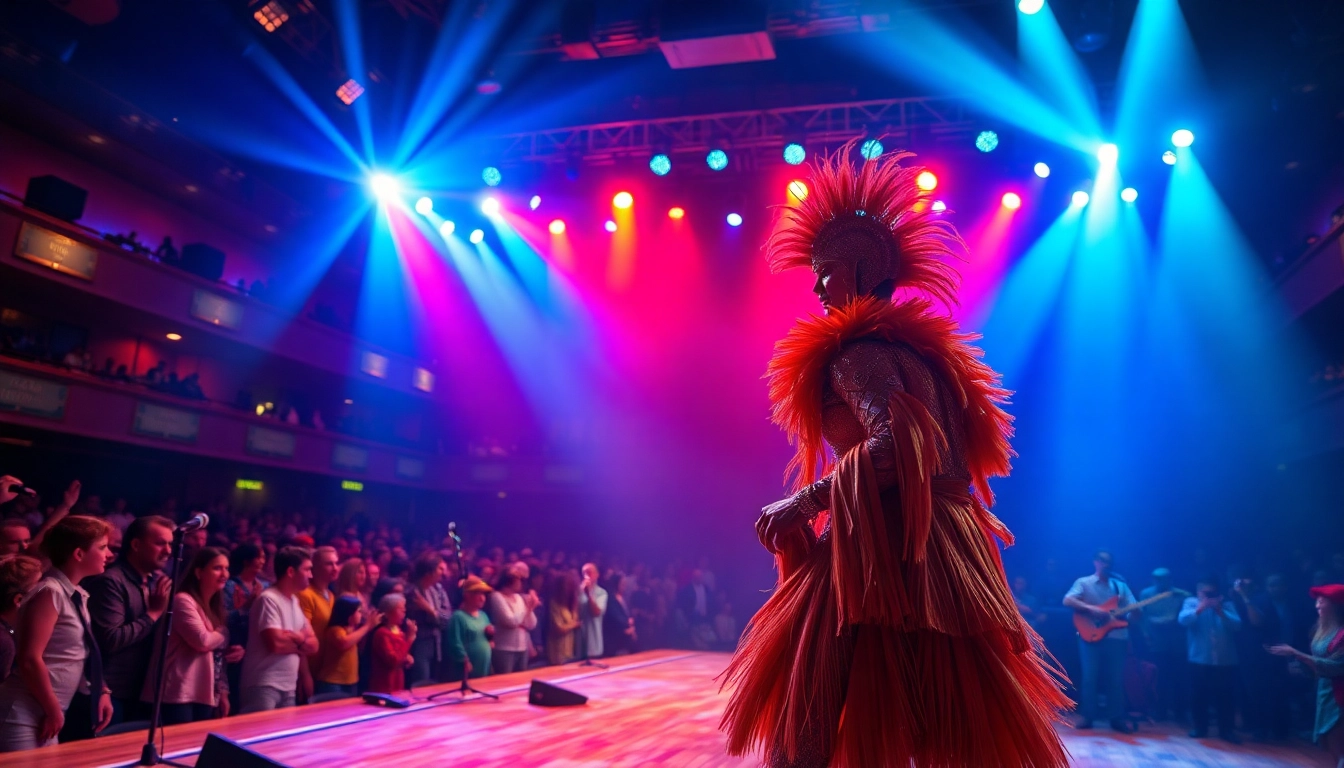Understanding the Appeal of Stage Shows
Stage shows have captivated audiences for centuries, offering a unique blend of storytelling, performance, and live entertainment. The artistry involved in stage shows creates an experience that is both immersive and unforgettable. In an age where digital content dominates our screens, the tactile, visceral atmosphere of live performance remains unmatched. This article will explore the multifaceted appeal of stage shows, covering their history, genres, and the reasons that audiences continue to flock to venues around the world.
The History and Evolution of Stage Shows
The origins of stage shows trace back to ancient civilizations, where storytelling was often intertwined with rituals and ceremonies. In Greece, theatrical performances were held in honor of Dionysus, the god of wine and festivity. These performances evolved through the Roman era, Renaissance, and into the modern age, shaping the structure and styles we recognize today. During the Renaissance, the rise of commedia dell’arte introduced improvisational theater, laying foundations for contemporary artistic expressions.
As society progressed, so did the art form. The 19th century brought about vaudeville, a theatrical variety show characterized by multiple acts, including comedy, music, and dance—elements that echo today in musical theater. The advent of technology further revolutionized stage shows, introducing electric lighting and advanced sound systems, enhancing the overall audience experience. Today, stage shows encompass a diverse range of performances, from classic plays to bold experimental works, each reflecting the cultural zeitgeist of their time.
The Diverse Genres of Stage Shows
Stage shows come in various genres, each with its unique characteristics and audience appeal. Some of the most popular genres include:
- Musicals: A convergence of dialogue, music, and dance, musicals engage audiences through emotive storytelling and catchy songs.
- Plays: Traditional dramas and comedies that focus on character-driven narratives, often exploring complex themes and human emotions.
- Dance Performances: These shows primarily focus on the physical expression of art through various dance styles, showcasing the performers’ technical skill and artistry.
- Cirque and Variety Shows: These performances often combine acrobatics, dance, and theatricality, providing a sensory overload of sights and sounds that entertain and mesmerize.
Each genre requires distinct creative approaches, from writing and choreography to direction and set design, contributing to the myriad possibilities within the realm of stage shows.
Why Audiences Love Live Performances
Why do audiences gravitate toward live performances? The answer lies in the shared experience that stage shows foster. Live performances offer an opportunity for audiences to connect with the performers and each other in a way that recorded media cannot replicate. The anticipation of a collective experience enhances emotional investment in the storyline and characters.
Moreover, the unpredictability of live theater adds an element of excitement and risk. A missed cue, a remarkable improvisation, or the energy of the audience can transform a performance into something extraordinary. Additionally, live performances often promote emotional responses, creating lasting memories that resonate long after the curtain falls.
Key Elements That Make Stage Shows Successful
The Role of Storytelling in Stage Shows
At the heart of all successful stage shows is compelling storytelling. Whether through dialogue, music, or physical movement, the narrative drives the audience’s engagement. A well-structured story introduces relatable characters, conflicts, and resolutions, enabling audiences to see parts of themselves in the characters’ journeys.
Effective storytelling also utilizes thematic elements that resonate with the audience. Themes of love, loss, identity, and social issues create a richness that elicits empathy, making the experience personal for each viewer. Furthermore, pacing and rhythm define how the story unfolds, maintaining audience interest and emotional engagement throughout the performance.
Importance of Casting and Performances
Casting is fundamental to the success of a stage show. The right actors breathe life into characters, translating the written word into captivating performances. Casting directors seek not only talent but also chemistry between performers, as relationships on stage enhance authenticity and emotional depth.
Performers must also possess strong emotional intelligence, allowing them to connect with their characters and convey these emotions convincingly to the audience. Dynamic performances—full of charisma, nuance, and conviction—can turn a good show into a breathtaking experience. Training in acting, singing, and dance is crucial for performers, ensuring they have the skills to execute their roles effectively.
Set Design and Technical Aspects of Stage Shows
The visual aspect of stage shows undeniably influences audience perception and experience. Set design, lighting, and sound design work together to create an atmospheric setting that enhances storytelling. The design should align with the narrative’s emotional tone and themes while also considering practical aspects, such as transitions between scenes.
Lighting design plays a pivotal role in establishing mood. Different lighting techniques can evoke emotions, highlight specific moments, and draw attention to characters or action on stage. Sound design, including music and sound effects, complements the visual elements, creating a holistic sensory experience. Together, these technical aspects transform an ordinary performance into an extraordinary theatrical event.
Strategies for Marketing Your Stage Shows
Utilizing Social Media for Promotion
In today’s digital landscape, social media is a powerful tool for promoting stage shows. Platforms like Instagram, Facebook, and TikTok allow producers and performers to reach wider audiences through creative content such as teaser videos, behind-the-scenes insights, and engaging posts. A well-crafted social media strategy not only announces the show but also builds a community around it.
Visual content is particularly effective in this industry; captivating images or video clips can generate buzz and intrigue among potential audience members. Engaging with your audience through comments and shares fosters a personal connection, making them feel invested in the performance. Additionally, strategic use of hashtags can increase visibility, reaching audiences that share interests in theater and live performance.
Building Partnerships and Collaborations
Collaborating with local businesses, schools, and community organizations can significantly enhance marketing efforts. Partnerships can involve anything from cross-promotions to sponsorships, creating a network that benefits all parties involved. Collaborations can also extend into the arts, joining forces with local artists, musicians, or dancers to elevate a production artistically.
Networking with influencers and theater critics can provide opportunities for reviews and features, boosting visibility and credibility. Moreover, engaging with the community through outreach programs or workshops establishes a rapport, positioning the stage show as a valuable contributor to the local arts scene.
Effective Audience Engagement Techniques
Engaging with your audience extends beyond the final bow. Techniques such as post-show discussions, meet-and-greets with performers, and interactive social media campaigns can sustain the excitement surrounding your stage show. Encouraging audiences to share their experiences through testimonials or social media posts creates a sense of community and ownership.
Incorporating audience feedback into subsequent performances can also enhance engagement. By making audiences feel heard and valued, producers create loyal patrons who are more likely to return for future shows and recommend the production to others.
Best Practices in Producing Stage Shows
Budgeting and Funding for Stage Shows
Successful stage shows require careful financial planning. Budgeting encompasses all costs, such as venue rental, talent salaries, marketing expenses, and technical equipment. Securing sufficient funding is vital, whether through ticket sales, sponsorships, grants, or crowdfunding. Identifying potential revenue streams can mitigate the risks associated with production and allow for creative flexibility.
Cost control during production is equally critical. Regularly reviewing expenses and seeking cost-effective solutions without compromising quality can improve financial stability. Clearly defined budget lines for different aspects of production help in tracking spending and ensuring financial accountability.
Timelines and Scheduling for Productions
Establishing a clear timeline is essential for the production of stage shows. Scheduling should encompass all phases, including pre-production planning, rehearsals, technical runs, and performance nights. A detailed timeline allows for effective time management, ensuring each component receives appropriate attention and resources.
Introducing buffer times into the schedule can also help mitigate unforeseen delays. Adaptability in the timeline can accommodate last-minute changes, ensuring the production remains on track without compromising quality.
Feedback and Improvement for Future Stage Shows
Feedback is crucial for the evolution of stage shows. Gathering insights from cast members, crew, and audiences can highlight strengths and areas for improvement. Performance reviews, exit surveys, and focus groups can provide invaluable information on audience perceptions and experiences.
Incorporating feedback into future productions fosters continuous improvement. Producers can analyze trends in the data to understand what resonates with audiences, guiding future creative decisions. This commitment to growth not only enhances the quality of individual productions but also elevates the overall standard of stage shows within the community.
Measuring Success and Audience Impact of Stage Shows
Key Performance Metrics for Evaluating Stage Shows
Measuring the success of stage shows goes beyond ticket sales. Key performance metrics include audience attendance, revenue generated, critical reviews, and social media engagement. Attendance numbers reveal the production’s popularity, while revenue helps gauge financial health.
Critical reviews from theater critics and audience testimonials provide insights into the quality of the performance and production. Social media engagement metrics, such as likes, shares, and comments, indicate audience interest and investment in the show. Analyzing these metrics allows producers to assess the impact of their work and adjust strategies accordingly.
Gathering Audience Feedback Effectively
Audience feedback can be gathered through various channels. Surveys administered through email or social media can yield insights about the audience’s experience. Engaging with audience members post-performance in informal settings can also provide candid feedback.
Integrating feedback mechanisms into your marketing strategy enhances the likelihood of collecting valuable insights. Consider incentivizing feedback by offering discounts on future shows or exclusive content to encourage more audience members to participate.
Long-Term Impact of Stage Shows on Community Engagement
Stage shows can significantly impact community engagement by fostering cultural growth, encouraging artistic expression, and bringing people together. Productions often reflect local narratives and themes, resonating with audience members and promoting dialogue on relevant societal issues.
Moreover, the accessibility of stage shows encourages community participation, whether through attending performances or contributing as performers, crew members, or volunteers. The long-term effects can result in stronger community ties, appreciation for the arts, and a supportive environment for future productions.
In conclusion, stage shows remain a vibrant cornerstone of cultural life, offering unique narratives and collective experiences that resonate deeply within communities. By understanding the elements that contribute to their success and employing effective marketing and engagement strategies, producers can continue to create unforgettable performances that captivate audiences for generations to come.

